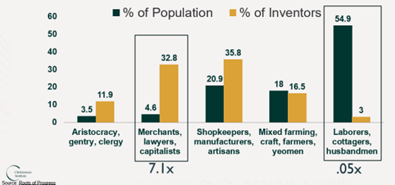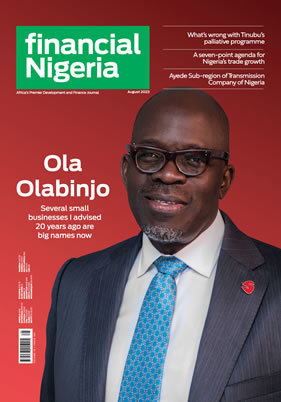Rethinking inequality: What if it’s a feature, not a bug?

Feature Highlight
When the higher levels of a hierarchy enable the flourishing of the lower levels, prosperity expands from the roots upward.
Despite the global economy growing by more than 10x since 1980, from $11 trillion to over $110 trillion, today only 7% of the global population live on more than $50 a day – roughly $18,250 a year. That amount is barely above the poverty guideline for a single person in the United States. Most of the income and wealth created has gone to the top earners. 
Source: Pew Research Centre
The richest 10% of the global population take home 52% of the world’s income, while the bottom 50% take home just 8.5%. What’s even worse than income inequality is wealth inequality. The top 10% own 76% of all wealth generated while the bottom 50% own just 2%, according to research from the World Inequality Lab. And as important as income is, wealth is what enables most people to manage shocks and build more resilient lives.
The 2025 Oxfam report on inequality, Takers, Not Makers, describes how wealth for the richest continues to skyrocket, with the expectation of five trillionaires within a decade, while the number of people living in poverty globally hasn’t budged since 1990.
The solution is often to expose and shame the rich, call for increased taxes on them, and then to redistribute income and wealth more equitably. The impulse is understandable and perhaps even noble. The only problem is that it isn’t working. Worse still, it is unlikely to ever work.
Since Oxfam released its first report on inequality, global inequality has increased significantly. Since 2015, the wealth of the top 1% has surged by over $33.9 trillion, according to Oxfam’s findings. “The wealth of just 3,000 billionaires has surged $6.5 trillion in real terms since 2015, and now comprises the equivalent of 14.6 per cent of global GDP,” one of their reports notes. It also notes that billionaire wealth is growing at a faster rate than in previous years.
With the advent of artificial intelligence, mounting fiscal pressures, and rising nationalism, this trend is likely to intensify rather than reverse.
The mechanism we rely on to fix inequality, the government, is itself deeply entangled in it. Those with the greatest influence over taxation and redistribution are often the very people who benefit most from the current system. Expecting such a structure to take from itself and give to others is unlikely to lead to major reform.
If redistribution cannot deliver, then perhaps the solution lies elsewhere, not in taking from the top, but in redesigning how the entire system functions.
A different way to think about inequality
What if we are thinking about inequality all wrong? What if we thought about inequality as a feature and not a bug?
In her book, Thinking in Systems, the late Donella Meadows reminds us that highly functioning systems have three characteristics: resilience, self-organisation, and hierarchy. It’s the characteristic of hierarchy that’s important here.
Meadows reminds us that “the original purpose of a hierarchy is always to help its originating subsystems do their jobs better. This is something, unfortunately, that both the higher and lower levels of a greatly articulated hierarchy can easily forget. Therefore, many systems are not meeting our goals because of malfunctioning hierarchies.”
In effect, Meadows is describing how well-functioning systems, from forests and coral reefs to families and schools, exhibit this quality: those with more exist to serve those with less.
In a tree, roots empower the leaves while the leaves sustain the roots. The trunk and branches are intermediaries of exchange and balance. When any layer becomes parasitic, taking more than it gives, the system weakens. Disease spreads, growth halts, or collapse follows.
Consider the following examples.
In well-functioning systems, the healthiest hierarchies exist not to dominate but to serve. For instance, concrete and steel exist to serve glass and wood. The goal then should not be to take from steel or concrete and give to glass and wood.
Share of population responsible for inventions during the British Industrial Revolution
The same is true for societies. The goal is not to take from the rich and give to the poor, but to design systems in which those with more – wealth, knowledge, or capacity – exist to serve those with less. That is how the natural world sustains itself and how healthy economies grow. When the higher levels of a hierarchy enable the flourishing of the lower levels, prosperity expands from the roots upward. This is the essence of market creation, which I have written plenty about.
Inequality, then, is not our greatest danger; it might just be our greatest opportunity to build systems that serve rather than exploit.
Efosa Ojomo is a senior research fellow at the Clayton Christensen Institute for Disruptive Innovation, and co-author of The Prosperity Paradox: How Innovation Can Lift Nations Out of Poverty. Efosa researches, writes, and speaks about ways in which innovation can transform organisations and create inclusive prosperity for many in emerging markets.
Other Features
-
Are we in a financial bubble?
There are at least four ways to determine when a bubble is building in financial markets.
-
Powering financial inclusion across Africa with real-time digital ...
Nigeria is a leader in real-time digital payments, not only in Africa but globally also.
-
Analysis of NERC draft Net Billing Regulations 2025
The draft regulation represents a significant step towards integrating renewable energy at the distribution level of ...
-
The need for safeguards in using chatbots in education and healthcare
Without deliberate efforts the generative AI race could destabilise the very sectors it seeks to transform.
-
Foundation calls for urgent actions to tackle fake drugs and alcohol
Olajide Olutuyi, Executive Director, Samuel Olutuyi Foundation, warns: “If left unchecked, the ‘death ...
-
Got excess airtime? Discover the Top 5 Best Platforms to sell ...
Prestmit is one of the leading airtime-to-cash platforms in Nigeria, known for its speed and reliability.
-
-
Trump is losing his geoeconomic war
The Trump administration has reached for the most obvious and widely discussed lever: the dollar.
-
Lessons from Lesotho for low-income countries
For years, global development practitioners have been trapped in a false choice of aid versus trade. Lesotho tried ...
Most Popular News
- NDIC pledges support towards financial system stability
- Artificial intelligence can help to reduce youth unemployment in Africa – ...
- Lagride launches minibus service to disrupt Korope in Lagos
- Foundation calls for urgent actions to tackle fake drugs and alcohol
- We are better positioned to prosecute suspects in bank failures - NDIC Boss
- Ventures Platform secures $64 million for seed funding















